Abstract
The effect of temperature on Hill activity has been compared in chilling-sensitive and chilling-resistant plants. The Arrhenius activation energy (Ea) for the photoreduction of 2,6-dichlorophenolindophenol by chloroplasts isolated from two chilling-sensitive plants, mung bean (Vigna radiata L. var. Mungo) and maize (Zea mays L. cv. PX 616), increased at low temperatures, below 17 C for mung bean and below 11 C for maize. However, the Ea for this reaction in pea (Pisum sativum L. cv. Massay Gem), a chilling-resistant plant, likewise increased at temperatures below 14 C. A second change in Ea occurred at higher temperatures. The Ea decreased above about 28 C for mung bean, 30 C for maize, and 25 C for pea. At temperatures approaching 40 C, thermal inactivation of Hill activity occurred. These results, when taken together with previous results obtained with the chilling-resistant plant barley, indicate that chloroplasts from both chilling-sensitive and chilling-resistant plants can undergo a change in chloroplast membrane activity at low temperatures above freezing and that the presence of such a change in chloroplast membranes is not necessarily correlated with chilling sensitivity.
Full text
PDF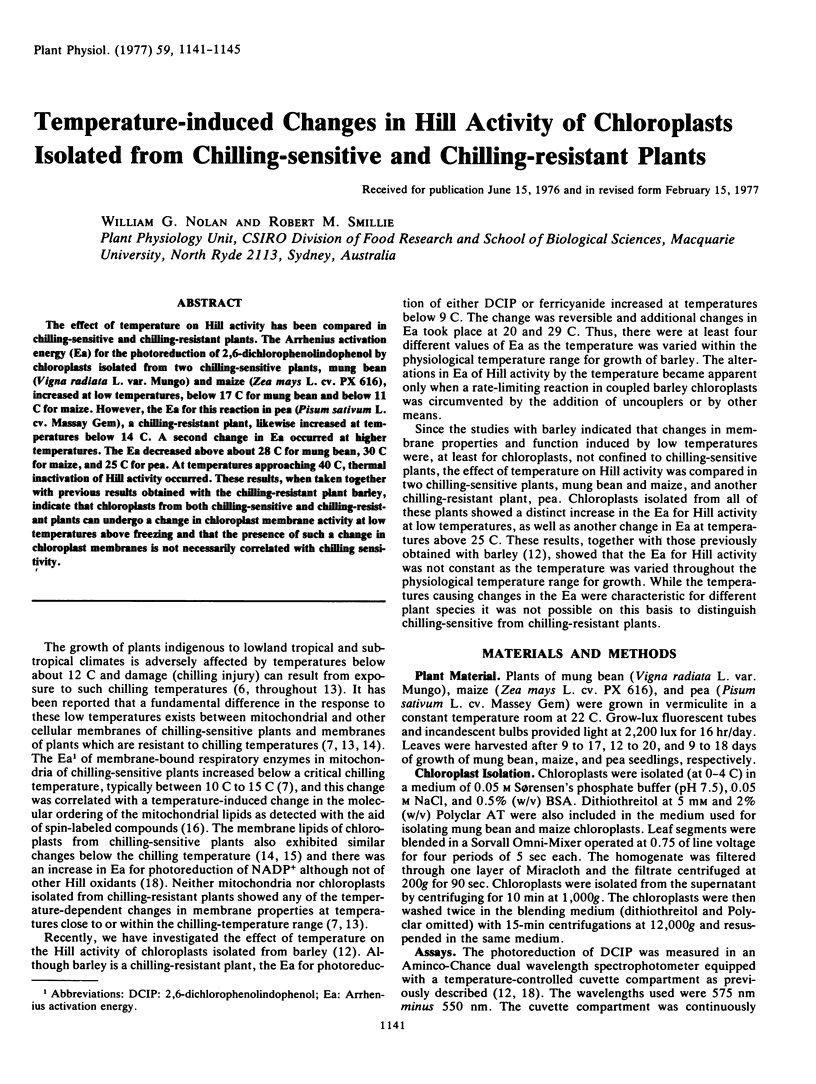
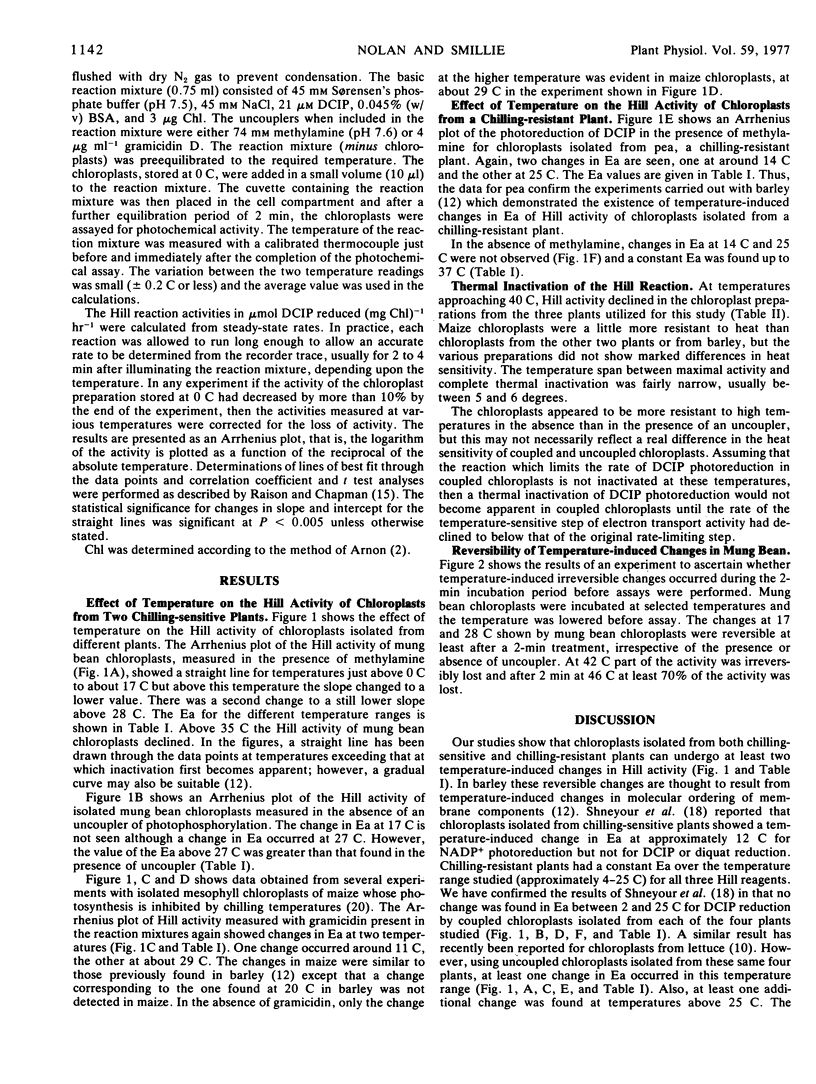
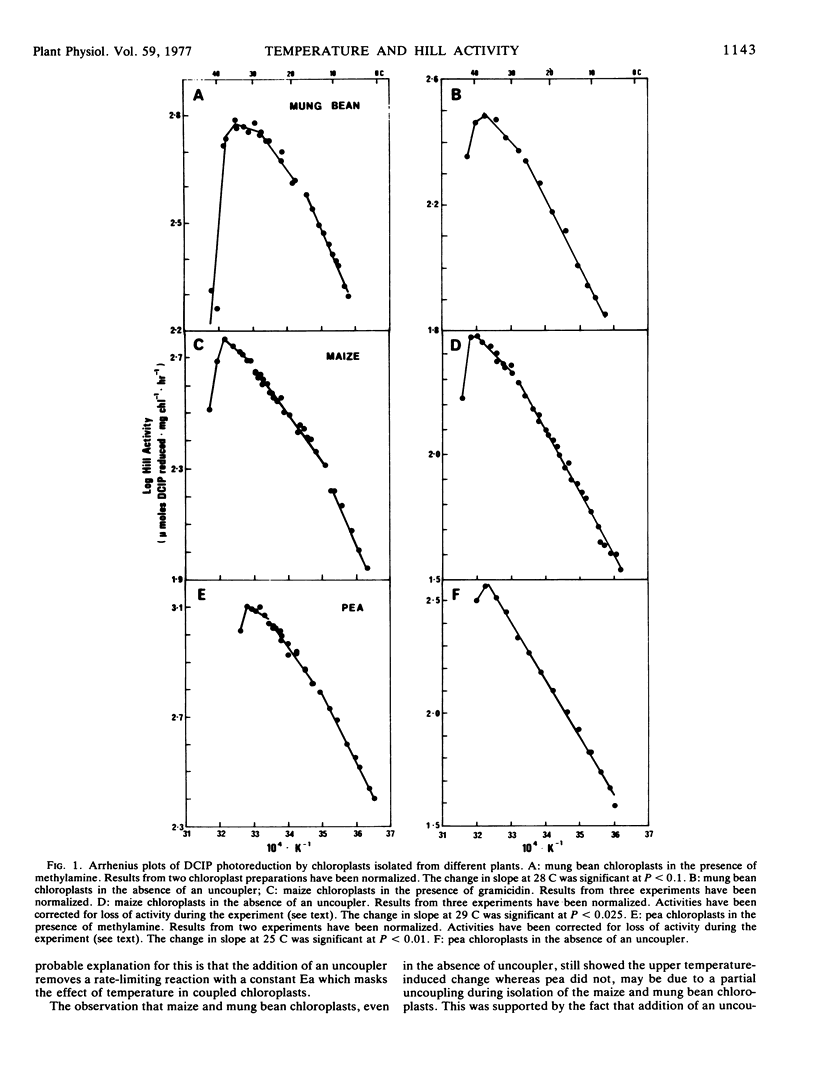
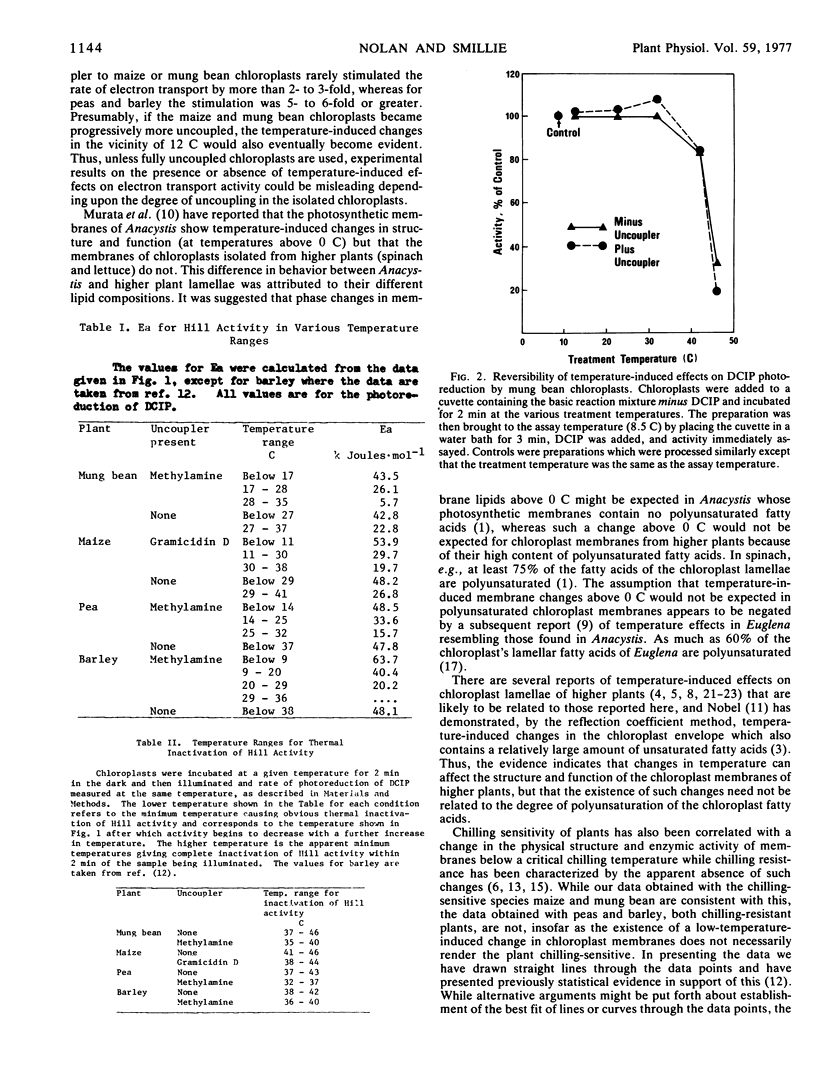
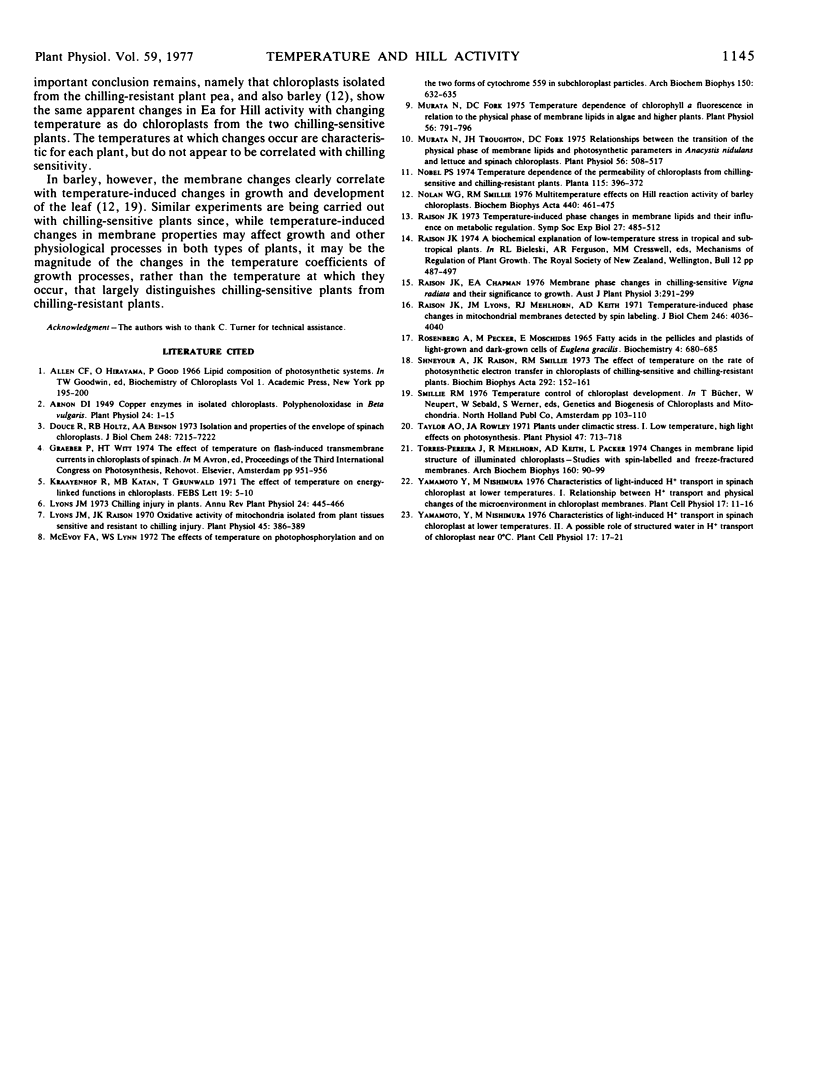
Selected References
These references are in PubMed. This may not be the complete list of references from this article.
- Arnon D. I. COPPER ENZYMES IN ISOLATED CHLOROPLASTS. POLYPHENOLOXIDASE IN BETA VULGARIS. Plant Physiol. 1949 Jan;24(1):1–15. doi: 10.1104/pp.24.1.1. [DOI] [PMC free article] [PubMed] [Google Scholar]
- Douce R., Holtz R. B., Benson A. A. Isolation and properties of the envelope of spinach chloroplasts. J Biol Chem. 1973 Oct 25;248(20):7215–7222. [PubMed] [Google Scholar]
- Kraayenhof R., Katan M. B., Grunwald T. The effect of temperature on energy-linked functions in chloroplasts. FEBS Lett. 1971 Nov 15;19(1):5–10. doi: 10.1016/0014-5793(71)80592-6. [DOI] [PubMed] [Google Scholar]
- Lyons J. M., Raison J. K. Oxidative activity of mitochondria isolated from plant tissues sensitive and resistant to chilling injury. Plant Physiol. 1970 Apr;45(4):386–389. doi: 10.1104/pp.45.4.386. [DOI] [PMC free article] [PubMed] [Google Scholar]
- McEvoy F. A., Lynn W. S. The effects of temperature on photophosphorylation and on the two forms of cytochrome 559 in subchloroplast particles. Arch Biochem Biophys. 1972 Jun;150(2):632–635. doi: 10.1016/0003-9861(72)90083-5. [DOI] [PubMed] [Google Scholar]
- Murata N. Relationships between the Transition of the Physical Phase of Membrane Lipids and Photosynthetic Parameters in Anacystis nidulans and Lettuce and Spinach Chloroplasts. Plant Physiol. 1975 Oct;56(4):508–517. doi: 10.1104/pp.56.4.508. [DOI] [PMC free article] [PubMed] [Google Scholar]
- Murata N. Temperature dependence of chlorophyll a fluorescence in relation to the physical phase of membrane lipids algae and higher plants. Plant Physiol. 1975 Dec;56(6):791–796. doi: 10.1104/pp.56.6.791. [DOI] [PMC free article] [PubMed] [Google Scholar]
- Nolan W. G., Smillie R. M. Multi-temperature effects on Hill reaction activity of barley chloroplasts. Biochim Biophys Acta. 1976 Sep 13;440(3):461–475. doi: 10.1016/0005-2728(76)90034-7. [DOI] [PubMed] [Google Scholar]
- ROSENBERG A., PECKER M., MOSCHIDES E. FATTY ACIDS IN THE PELLICLES AND PLASTIDS OF LIGHT-GROWN AND DARK-GROWN CELLS OF EUGLENA GRACILIS. Biochemistry. 1965 Apr;4:680–685. doi: 10.1021/bi00880a010. [DOI] [PubMed] [Google Scholar]
- Raison J. K., Lyons J. M., Mehlhorn R. J., Keith A. D. Temperature-induced phase changes in mitochondrial membranes detected by spin labeling. J Biol Chem. 1971 Jun 25;246(12):4036–4040. [PubMed] [Google Scholar]
- Raison J. K. Temperature-induced phase changes in membrane lipids and their influence on metabolic regulation. Symp Soc Exp Biol. 1973;27:485–512. [PubMed] [Google Scholar]
- Shneyour A., Raison J. K., Smillie R. M. The effect of temperature of the rate of photosynthetic electron transfer in chloroplasts of chilling-sensitive and chilling-resistant plants. Biochim Biophys Acta. 1973 Jan 18;292(1):152–161. doi: 10.1016/0005-2728(73)90259-4. [DOI] [PubMed] [Google Scholar]
- Taylor A. O., Rowley J. A. Plants under Climatic Stress: I. Low Temperature, High Light Effects on Photosynthesis. Plant Physiol. 1971 May;47(5):713–718. doi: 10.1104/pp.47.5.713. [DOI] [PMC free article] [PubMed] [Google Scholar]
- Torres-Pereira J., Mehlhorn R., Keith A. D., Packer L. Changes in membrane lipid structure of illuminated chloroplasts: studies with spin-labeled and freeze-fractured membranes. Arch Biochem Biophys. 1974 Jan;160(1):90–99. doi: 10.1016/s0003-9861(74)80012-3. [DOI] [PubMed] [Google Scholar]


